Podcast: Play in new window | Download (Duration: 22:30 — 23.2MB)
Let’s learn about a whole lot of mustelids, including some otters, weasels, and their relations and ancestors! Thanks to Jacob for the suggestion!
Further reading:
Weasels in Stone: Mustelid Evolution
With voices joined in chorus, giant otter families create a distinct sound signature
Further watching/listening:
Video of giant river otters making noise
Giant river otters:
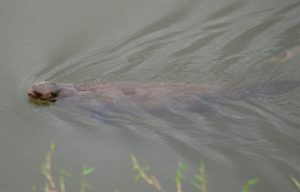
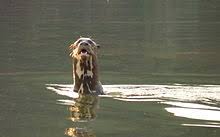
The least weasel is possibly the most cute:
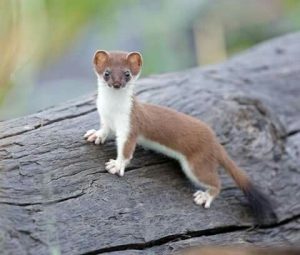
This mink would like to keep its fur for itself please and thank you:
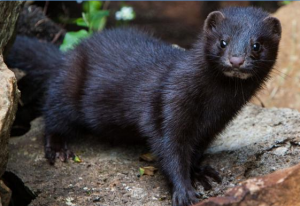
The Patagonian weasel:
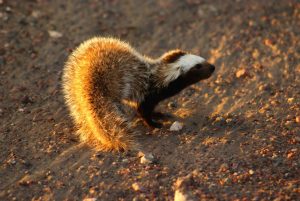
The greater grison looks like a badger and a honey badger:
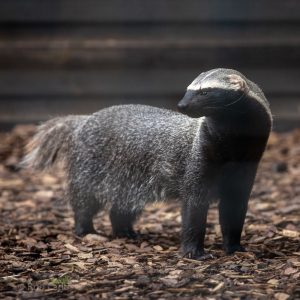
The fisher:
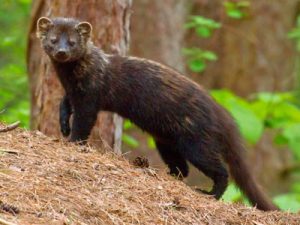
The Chinese ferret badger has a long nose compared to most mustelids:
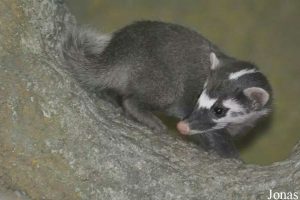
Show transcript:
Welcome to Strange Animals Podcast. I’m your host, Kate Shaw.
This week we’ll learn about some mustelids, better known as weasels and their close relations! Thanks to Jacob for this week’s suggestion.
The weasel is a member of the family Mustelidae. Members of the family are called mustelids, which includes wolverines and badgers, which we talked about in episode 62, otters, which we talked about in episode 37, and ferrets, which we talked about in episode 150. Most mustelids have short legs and long, slender, flexible bodies, although badgers are an exception since they’re broad-bodied. This body shape allows a mustelid to enter the burrows of other animals and kill them, because mustelids are carnivores.
But not all animals that look like weasels and ferrets are actually mustelids. The mongoose, for instance, is not a mustelid.
The study of how mustelids evolved and spread throughout much of the world is a pretty hot topic these days, which makes it confusing to summarize since so much new knowledge keeps shaking up what we know. But I’ll do my best.
The first mustelids evolved around 30 million years ago in what is now Eurasia, and spread to North America much later and eventually into South America. The oldest mustelid fossils found in North America are a group of animals called oligobunines. I read that word as oligobunnies every single time, but they didn’t look like bunnies. They probably looked like wolverines, which are related to badgers but look more like miniature bears with longer tails, but they probably spent more time underground than wolverines do.
At least one oligobunid might have grown as big as a black bear, at least a small bear. Megalictis was probably an ambush predator and lived around 21 million years ago in what is now the upper Midwest of North America. It had teeth meant for crushing bones. Another oligobunid, Zodiolestes, is one we talked about briefly in episode 103, about trace fossils. The first fossil Zodiolestes was found in a corkscrew-shaped Palaeocastor burrow, presumably because it got stuck in the burrow while it was hunting, but Zodiolestes was also adapted to dig. The oligobunids went extinct around 10 million years ago, possibly outcompeted by a new wave of modern mustelids that evolved in Asia and spread into North America.
One mustelid, Ekorus ekakeran, lived about six million years ago in what is now Africa, with fossils found in Kenya. But it didn’t look like any other mustelid. It had long legs, for one thing. It stood almost two feet tall at the shoulder, or 60 cm, and was built more like a leopard than a mustelid. It would have been a much faster runner than other mustelids as a result, although it was probably an ambush predator. Researchers think it was eventually outcompeted by big cats when they evolved as the forests changed into grasslands.
The biggest mustelid that ever lived, as far as we know, is Enhydriodon, a type of gigantic otter. It lived in Africa around 4 million years ago and may have been the size of a small bear, even bigger and heavier than Megalictis. We only have a single fossil of Enhydriodon, though, a skull, so scientists can only estimate the animal’s size compared to what we know about extinct and living otters. It probably lived on land, although that’s about as far as our knowledge of it goes.
Another giant mustelid was Plesiogulo, which evolved in Asia and crossed into North America 6 1/2 or 7 million years ago when the continents were connected by the Bering land bridge. Researchers weren’t sure for a long time if Plesiogulo was directly ancestral to living wolverines, but recent studies indicate that it probably was. It was larger than modern wolverines.
But what about living mustelids? The biggest known mustelid that’s still alive is the giant otter, which lives in much of northern and central South America, especially around the Amazon River, although it’s increasingly rare due to habitat loss, hunting for its fur, and pollution. It can grow up to 5 1/2 feet long, or 1.7 meters. It mostly eats fish but will eat other animals too, including crabs, snakes, turtles, and even small caimans. It’s a social animal that lives in family groups of up to twenty members that hunt and play together. It has short dense fur that’s usually brown or sometimes reddish, but it has white markings on its throat and upper chest. When it pops its head and neck out of the water, called periscoping, other otters can see its unique white markings and recognize who they’re looking at. It’s also really noisy as it communicates with other otters with barks, whines, growls, and softer sounds like humming. Each family group has a unique vocalization that identifies the group to other otters, and if a strange otter approaches the territory the whole family will scream at it to get out or else.
The sea otter is a little shorter than the giant otter, just under 5 feet long, or 1.5 meters, but it’s heavier than the giant otter. A big male can weight up to 119 pounds, or 54 kg. It lives along the coast of the North Pacific and while it can walk, it spends almost all its time in the water. Instead of blubber to keep it warm, the sea otter has incredibly dense fur, the densest coat ever measured. For almost two centuries people hunted it so aggressively for its fur that by 1911, there were fewer than 2,000 of them left. Fortunately, conservationists worked to get an international ban on sea otter hunting, and its numbers have rebounded although it’s still endangered.
The sea otter eats fish and anything else it can catch, especially shellfish, and it uses its front paws while hunting. It catches fish with its paws instead of with its mouth, it turns over rocks to look underneath them, and it pulls mollusks off of rocks and twists them open with its paws. This is all really unusual. No other otter uses its paws in this way. Not only that, the sea otter is a tool-user. It uses rocks to break open shellfish that it can’t twist open or bite through, and will in fact use two rocks at once for this purpose. One of the rocks it holds, but the other it keeps in a little pouch of skin under its arms to act as a hard surface to set the mollusk on. The sea otter also uses this built-in pocket to hold food. It has two pockets, one under each front leg, and it usually keeps its rock in the right pocket while it keeps its food in the left pocket. It floats on its back to eat, then rolls over and over in the water to clean its fur of any bits of food. It has to keep its fur incredibly clean for it to insulate the otter properly, so it grooms itself throughout the day. Pascal in Animal Crossing is a sea otter, by the way, and adorable.
The smallest living mustelid is the least weasel, which is native to northern North America and much of Eurasia but has been introduced in New Zealand and several islands throughout the world, where it’s an invasive species. The smallest subspecies of least weasel grow less than 10 inches long, or 26 cm, with a short tail. It’s brown with a white belly during the summer but its winter coat is completely white. It eats mice, voles, and other small rodents and will even kill rabbits although rabbits are much bigger than it is. Generally it only attacks young rabbits, though.
So that gives us some background about mustelids. Let’s talk about some interesting kinds of mustelid next, starting with the mink. You may have heard something about the mink in the news lately, because mink are kept in large numbers in fur farms and they’ve started to contract a mutated version of the Covid-19 virus. The virus is so widespread among mink in the country of Denmark that as of last week as this episode goes live, Denmark has decided to kill every single mink in captivity. That’s as many as 19 million animals. Keep in mind that these animals were eventually going to be killed anyway for their fur. That doesn’t make it any less sad, though. The same mutated virus has spread through fur farms in other countries, including Spain and the United States, leading to thousands of animals being killed to stop the spread. So far studies do not indicate that the minks are spreading the mutated version of the virus to humans. The Netherlands had already been planning to ban mink farming in a few years, but after an outbreak of the coronavirus earlier in 2020 the country decided to ban it by the end of this year. Good for them.
In the wild, where it belongs, the mink lives near rivers, lakes, or other sources of fresh water, and sometimes even along the coast. It eats fish, rabbits and other small mammals, eggs, small crustaceans like crayfish, and anything else it can catch. A big male can grow up to two feet long, or 62 cm, and it’s brown in color with a dense undercoat that helps keep it warm in cold weather. There’s a species that lives in North America and a species that lives in Europe, but while they look almost identical, they’re actually not very closely related.
If you think of weasels, you probably think of an animal that looks a lot like the mink or the ferret, with sleek fur. But the Patagonian weasel is quite different in many ways. It lives in Patagonia, which is the southern part of South America, and is the only member of its own genus. Its coat is shaggy with a bushy tail. It’s mostly white or off-white with brown patches and grows up to 14 inches long not counting its short tail, or 35 cm. We know almost nothing about the Patagonian weasel. We’re not even sure what it eats, except that it does probably eat small burrowing rodents, and it’s sometimes been kept by ranchers to kill rats the way ferrets were once used in England.
The greater grison is another unusual-looking mustelid native to Central America and northern South America. It’s shaped sort of like an otter but instead of brown fur it’s gray on top and black underneath. A white stripe separates the gray and black fur on its head and the sides of its neck. Most of its face is black, then the white stripe usually just above the eyes, then gray on top of its head. It can grow up to two feet long, or 60 cm, not counting its bushy tail, which can grow up to 14 inches long, or 20 cm. Like all mustelids, its ears are small and round and its body is long with short legs. Although it looks like an otter, including having webbed toes, it’s probably more closely related to the Patagonian weasel, and like the Patagonian weasel, we don’t know a whole lot about it.
The fisher is a mustelid that lives in North America, mostly in parts of Canada and in mountainous areas of northern and western United States. It used to be more widespread, but, you guessed it, it was trapped and killed for its fur until the 1930s and even as late as the 1980s in some areas.
Despite its name, the fisher doesn’t actually eat fish very often. The name fisher comes from a Dutch word, visse, which refers to a different mustelid, the European polecat. The fisher is also sometimes called the fisher cat even though it and the polecat are not cats. It’s a big animal, too. A big male fisher can grow nearly four feet long, or 1.22 m, although females are much smaller, and part of that length is the tail that can be as much as 16 inches long, or 41 cm.
The fisher has big feet that helps it walk on snow, retractable claws, and it can even rotate its hind feet nearly completely backwards, which means it can climb down trees headfirst. It lives in forests and spends a lot of time in trees, hunting birds and other small animals, but it mostly eats showshoe hares and porcupines. Yes, porcupines! Almost nothing will bother a porcupine, but the fisher will attack it from the front, biting its less protected face repeatedly until it dies. In areas where fishers were hunted to extinction, porcupines became so numerous that they started killing trees, since in winter porcupines eat tree bark and will also eat sapling trees. Fortunately, the population of fishers has grown and conservationists have reintroduced it into parts of its former range. It’s no longer considered endangered, hurrah! This is good because they’re hard to keep in captivity and they’re also susceptible to accidental poisoning when they eat rodents that have died from eating poison.
The fisher is supposed to be a loud animal with a terrifying scream at night, but people who study fishers don’t report hearing them scream or make loud sounds at all. The calls are all probably made by the red fox, which sounds like this:
[fox sound]
There are so many mustelids that I don’t even know what other ones to feature. It’s surprising how little we know about so many of them. The Vietnam ferret-badger was only described in 2011, for instance, and only known from two specimens. It’s related to other ferret-badgers found in Asia, including the Chinese ferret-badger. As you might guess from the name, it looks sort of like a badger but also like a ferret, which is a neat trick because those two animals do not actually look very much alike. It grows around 17 inches long, or 43 cm, plus another 9 inches, or 23 cm, for its tail. It’s dark brown above and lighter brown underneath, with a white stripe on its head and neck and a black mask on its face. Its muzzle is longer than most mustelids’, who usually have quite short noses. It’s an omnivore that eats fruit as well as insects, worms, frogs, and other small animals.
In general, as I’ve mentioned over and over, mustelids have historically been killed for their fur. Sable and ermine are both names of furs that come from mustelids. At least one species was driven to extinction by fur hunters, the sea mink. It lived along the northeastern coast of North America and was related to the American mink. We don’t even know exactly how big it was, because it was driven to extinction before it could be examined by scientists, except that it was probably bigger than the American mink. We don’t even have a complete specimen, just some skull fragments and teeth. It wasn’t as aquatic as otters are, but it occupied a similar ecological niche and spent much more time in the water than its close relations. It probably went extinct in the late 19th century. Other species of mustelid may have been driven to extinction without ever being known to science too. Certainly many species came close to extinction and are still threatened by habitat loss and other factors.
That’s depressing to think about, so let’s finish with a mystery that’s a little different from our usual mystery animals. This one’s a mystery song called “Pop Goes the Weasel.” You’re probably familiar with the tune even if you’re not sure about the words. There are lots of different lyrics to the song with various versions in different places. I learned it this way:
Round and round the mulberry bush / The monkey chased the weasel / The monkey stopped to pull up his socks / Pop! Goes the weasel.
A penny for a spool of thread / A penny for a needle / That’s the way the money goes / Pop! Goes the weasel.
What on earth do those lyrics mean? Do they mean anything? Why is there a weasel in the song?
The earliest lyrics known date back to at least the early 19th century in England, because the oldest versions of the song reference a famous pub in London from the time. The melody was probably much older and the words were fitted to the song at some point. By 1850 it was a popular dance, but even then no one knew what the lyrics meant.
There are lots of suggestions, some of which make more sense than others. The oldest lyrics seem to be these:
Half a pound of tuppenny rice / Half a pound of treacle / That’s the way the money goes / Pop! Goes the weasel.
Up and down the City road / In and out the Eagle / That’s the way the money goes / Pop! Goes the weasel.
The line “that’s the way the money goes” basically tells the story. It’s a song about how everything is a penny here, a penny there, and suddenly you’re broke. And if you’re going in the Eagle Tavern on London’s City Road too often, you’re drinking up whatever money you have left. But that still doesn’t explain the weasel.
One explanation is that to pop something was slang for pawning it, and that the term weasel is Cockney rhyming slang for a coat. You know, “weasel and stoat” rhyme with coat, therefore you can just say weasel and everyone who knows the rhyme knows that you’re talking about a coat. So if you pop a weasel, you’re pawning your coat to get a little extra money.
This sounds plausible, and there’s some evidence that the line “pop goes the weasel” was the only line of the song originally, with the other lyrics added later, which would explain why that one line is slang while the other lines aren’t. Anyway, it’s a fun song that you will not be able to get out of your head now.
You can find Strange Animals Podcast online at strangeanimalspodcast.blubrry.net. That’s blueberry without any E’s. If you have questions, comments, or suggestions for future episodes, email us at strangeanimalspodcast@gmail.com. If you like the podcast and want to help us out, leave us a rating and review on Apple Podcasts or just tell a friend.
Thanks for listening!